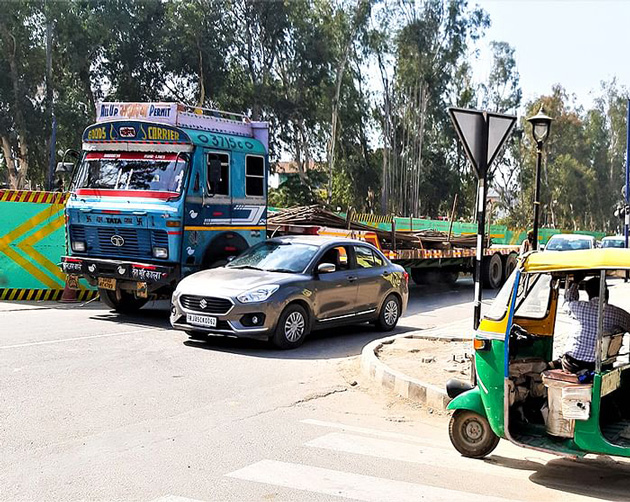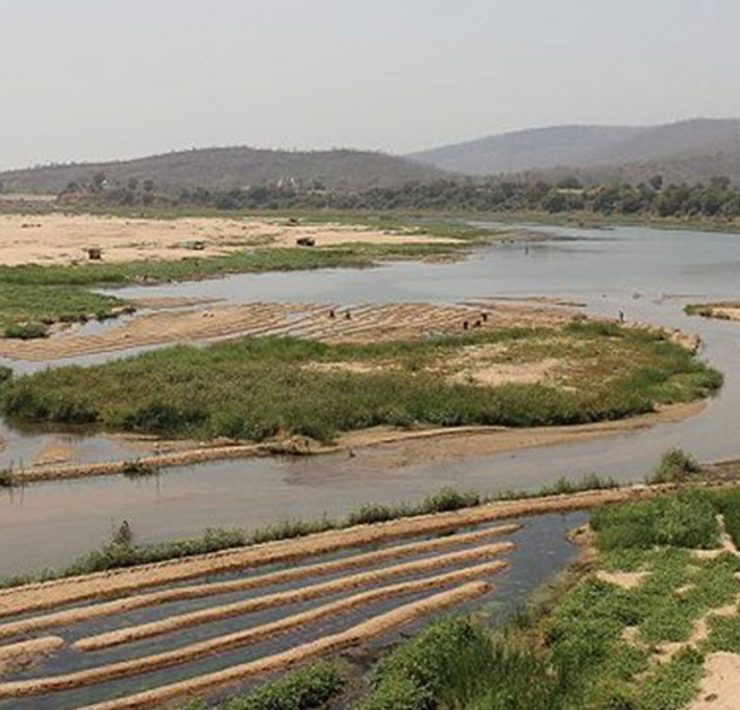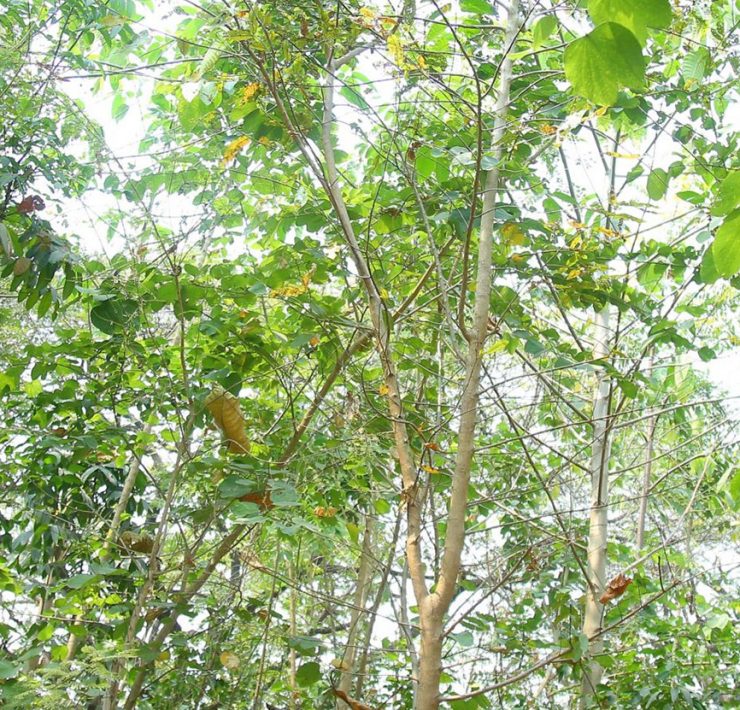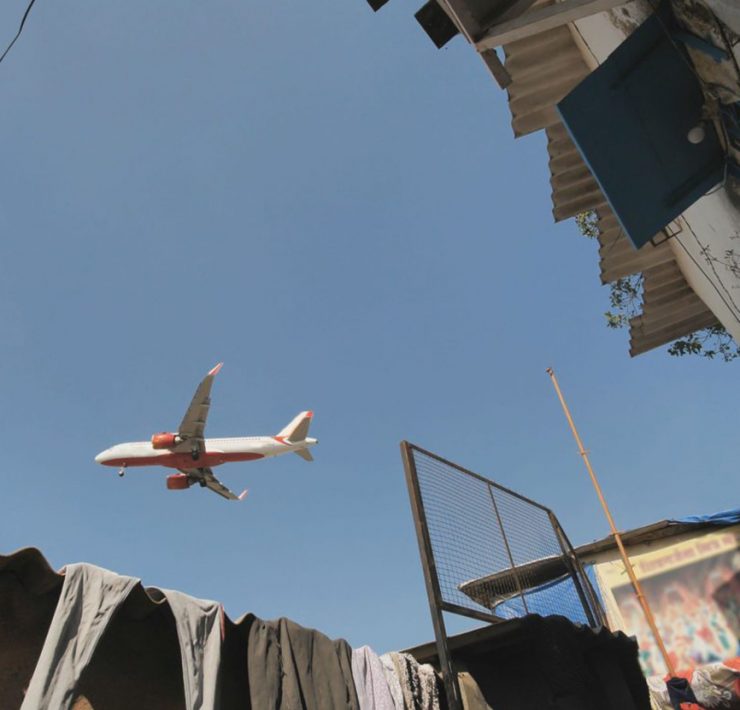Why Agra’s metro rail may wreck its historical heritage and environment
- Records obtained under the RTI Act show the project is being built without prior approvals from the National Monument Authority and the environment ministry.

This article first appeared on Newslaundry. Read the original piece here. Support independent media and subscribe to Newslaundry.
On December 7, prime minister Narendra Modi inaugurated the Rs 8,379-crore Agra metro rail project at a virtual ceremony. Uttar Pradesh chief minister Adityanath was also virtually present. The ceremony masked the fact that both their governments rushed the project without obtaining permissions from the agencies meant to protect the city’s heritage and the environment.
Records show that between September 2020 and inauguration day, the National Monument Authority, or NMA, the apex agency to protect monuments, had at least twice refused to allow the project in its current form because of its proximity to the city’s iconic monuments, including Agra Fort, Delhi Gate, and Jama Masjid.
An application under the Right to Information Act has revealed that the NMA hasn’t given the go-ahead to the project till date, despite repeated requests by the Uttar Pradesh Metro Rail Corporation, or UPMRC.
According to the Ancient Monuments and Archaeological Sites and Remains Act, 2010, construction is prohibited within 100 metres of monuments without the Archaeological Survey of India’s permission and regulated within 200 meters.
The Agra metro plan shows that it will pass within 100 meters of four ancient monuments and within 200 metres of nine. The NMA’s public information officer, responding to the RTI request, said permission for construction of metro projects in the regulated area is given by the NMA after ascertaining that there is no adverse impact on the monuments. Where the metro project includes elevated as well as underground construction activity in regulated areas around monuments, a heritage impact assessment report is drafted.
The records also show the metro is yet to get an approval from the union ministry of environment, forests and climate change to clear 4.18 hectares of protected forests. As per the Forest Conservation Act of 1980, the ministry’s permission is required to use any forest land for non-forest purposes after it has assessed the impact of the loss. The forest clearance portal of the ministry shows that the UPMRC’s application for clearing 0.057 hectare of forest for the initial phase of the metro is still pending.
Though the corporation has given an undertaking to the ministry that construction will start only after it receives the clearance, it awarded a tender for building a 3-km stretch in October 2020.
Advocate MC Mehta, who has long spearheaded the legal battle to preserve Agra’s environment and historical heritage threatened by the project, expressed concern about underground construction in the regulated area in the city. He referred to the 1996 judgement in Union of India vs MC Mehta which prioritised environmental conservation of the Taj Trapezium Zone and said the provisions of the order should be upheld while undertaking any project in the region.
Environmental lawyer Ritwik Dutta stated that issuing tenders without applying for forest clearances creates a fait-accompli situation, a presumably irreversible scenario, as the contracts have been granted to third party contractors. He adds that this undermines the process of environmental impact assessment based on the assumption that all the permissions will be given eventually and is an example of both impropriety and procedural irregularity.
The UPMRC has not responded to detailed queries regarding permissions for the metro project despite several attempts.

The project and its impact
The Agra metro is UPMRC’s third such project. The Lucknow metro has been operational since 2017 and the Kanpur metro is currently under construction.
The nearly 30-km network in Agra has two corridors. Corridor I is 14 km long with 13 stations starting at Sikandra and terminating at Taj Mahal’s East Gate on Fatehabad Road. Corridor II is 15.4 km long with 14 stations starting at Agra Cantt Railway Station and terminating at Kalindi Vihar on Delhi-Kolkata National Highway.
The project, according to its detailed project report, was conceived in 2017 and is meant to boost the city’s economy, generate employment, reduce air and sound pollution as well as traffic congestion, and offer an eco-friendly mass transit option.
Since Agra is a congested city, the only viable route for the metro rail passes close to 12 monuments – nine along Corridor I and the rest along Corridor II. One monument, Delhi Gate, is common between the two. Four monuments – Pathar Ka Ghoda, Guru Ka Taal Gurudwara, Roman Catholic Cemetery, and Lal Masjid – fall within 100 metres of the proposed route. Seven monuments – Akbar’s tomb, Salamat Khan’s tomb, Sadiq Khan’s tomb, Delhi Gate, Jama Masjid, Agra Fort, and Ram Bagh – are within 200 metres of the proposed construction activity.
In addition, the project is set to destroy 4.183 hectares of protected forest land, 1.765 hectares along Corridor I and 2.418 hectares along Corridor II. Most of the trees marked to be felled are at the Provincial Armed Constabulary Ground, the proposed depot for Corridor I. The ground is only 500 metres from Taj Mahal and constitutes a major portion of the green cover around the monument.
The central government had approved the project in March 2019 but the UPMRC needed permission from the Supreme Court, which has been hearing a case related to protection of environment in a designated area around the Taj Mahal called the Taj Trapezium Zone, to move ahead. The corporation filed an application for permission in November 2019.
Pending approvals
The top court asked its Central Empowered Committee, or CEC, a permanent panel of experts to examine forest-related matters, to study the application. The committee visited the site and recommended that the project be allowed on the condition that it take permissions from the NMA and the Archaeological Survey of India for construction near historical monuments – from the ministry for non-forest use of forest land and from Social Forestry Division, Agra, for felling trees on government and private non-forest land. The court agreed and gave a conditional clearance to the project in July 2020.
Yet, before any of these permissions were obtained, the UPMRC issued tenders for three stations as well as the depot at the PAC Ground near Taj Mahal on August 17 and awarded them in October.
Responding to an RTI application filed by this correspondent, the NMA said on February 10 that it hadn’t yet approved the project. The authority declined approval for an elevated corridor in the regulated area around four monuments in September and asked the UPMRC to resubmit its proposal, incorporating underground construction for the same. The UPMRC resubmitted the proposal on October 28, reiterating plans for elevated structures in regulated areas. The NMA again rejected the proposal since it was not in accordance with their earlier decision and asked the UPMRC to change the plan.
Response to another RTI request filed with the ASI to know the status of the UPMRC’s application for approval of construction in prohibited areas of centrally protected monuments is awaited.
According to the environment ministry’s project approval portal, Parivesh, the application for diversion of 0.057 hectares of protected forest land for non-forest use was filed by the Agra Metro Rail Corporation, a public sector unit as per the proposal form but a non-existent entity as per UPMRC’s public relations department, with the ministry on December 23, more than three months after the tenders were issued. The approval is pending as the divisional forest officer has raised questions about the project.
The permission from the forest department is also pending for felling of trees on non-forest land as per information provided by the authority on February 3, 2020 in response to an RTI application filed by this correspondent. In all, a total of 1,823 trees will be felled for the project. The apex court has mandated planting of 10 trees for each tree felled on the outskirts of the city as one of the conditions for clearing the project.
Expectations and reality
According to the detailed project report, the estimated ridership of Agra metro is expected to reach 7.29 lakh passengers by 2024, 10.34 lakh by 2031, and 12 lakh by 2041. But the experiences of the Lucknow Metro and the Delhi Metro – one of the longest running and most popular metro projects in the country — have not been promising.
As Dinesh Mohan, professor emeritus at the Indian Institute of Technology, Delhi, notes in an article in the Economic and Political Weekly, the initial projected daily ridership for the Delhi metro, started in 2002, was 31 lakh passengers by 2005. This estimate was reduced in 2005, first to 21.8 lakh passengers and subsequently to 15 lakh a day. Until the end of 2016-17, the average daily ridership had reached 27.6 lakh passengers, still far less than the original estimates. According to the Delhi government’s socioeconomic survey, only 6.18 percent of people residing in the capital commute by metro while over 60 percent use buses.
The estimate for daily ridership for the Lucknow metro, as per its detailed project report, was 8.88 lakh passengers by 2020. By mid-2019, the average daily ridership was only about 60,000, according to the Financial Express.
Given such performance of metro projects in more populated and urbanised cities, questions have been raised about the feasibility of the Agra project. That’s aside from questions about the damage it will do to Agra’s environment and historical heritage.
This story is reported under the NFI Fellowship for Independent Journalists.







